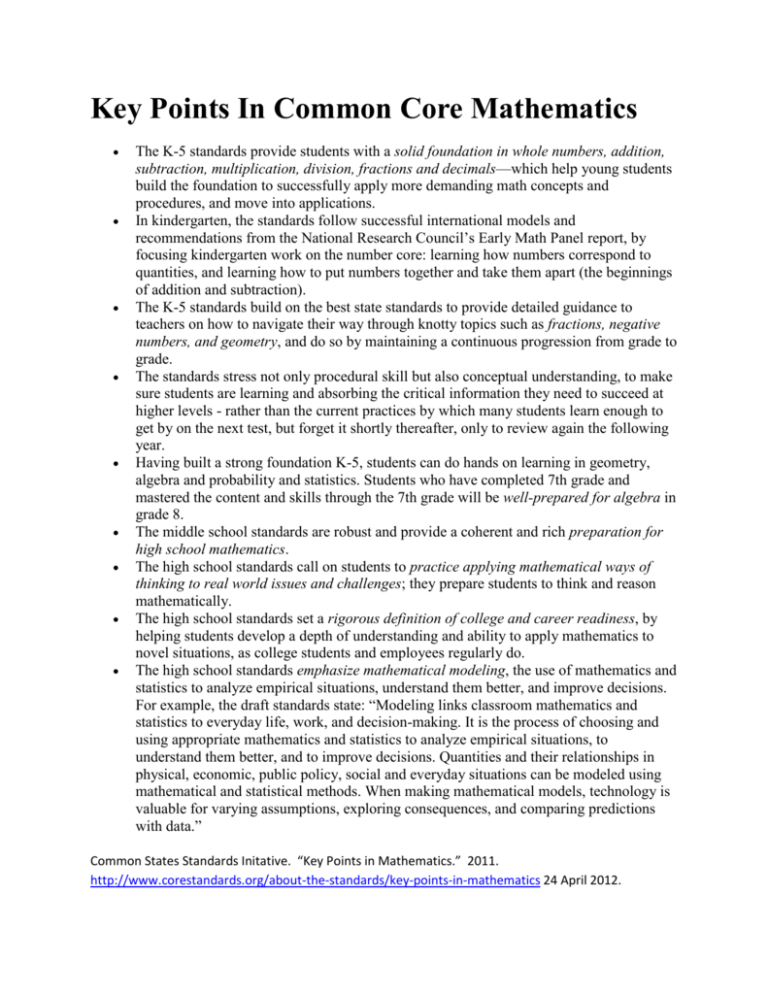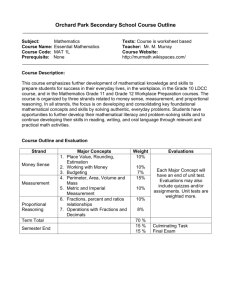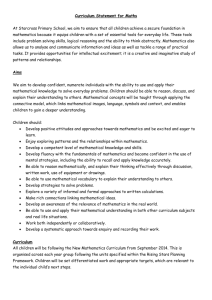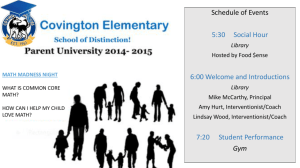Key Points In Common Core Mathematics
advertisement

Key Points In Common Core Mathematics The K-5 standards provide students with a solid foundation in whole numbers, addition, subtraction, multiplication, division, fractions and decimals—which help young students build the foundation to successfully apply more demanding math concepts and procedures, and move into applications. In kindergarten, the standards follow successful international models and recommendations from the National Research Council’s Early Math Panel report, by focusing kindergarten work on the number core: learning how numbers correspond to quantities, and learning how to put numbers together and take them apart (the beginnings of addition and subtraction). The K-5 standards build on the best state standards to provide detailed guidance to teachers on how to navigate their way through knotty topics such as fractions, negative numbers, and geometry, and do so by maintaining a continuous progression from grade to grade. The standards stress not only procedural skill but also conceptual understanding, to make sure students are learning and absorbing the critical information they need to succeed at higher levels - rather than the current practices by which many students learn enough to get by on the next test, but forget it shortly thereafter, only to review again the following year. Having built a strong foundation K-5, students can do hands on learning in geometry, algebra and probability and statistics. Students who have completed 7th grade and mastered the content and skills through the 7th grade will be well-prepared for algebra in grade 8. The middle school standards are robust and provide a coherent and rich preparation for high school mathematics. The high school standards call on students to practice applying mathematical ways of thinking to real world issues and challenges; they prepare students to think and reason mathematically. The high school standards set a rigorous definition of college and career readiness, by helping students develop a depth of understanding and ability to apply mathematics to novel situations, as college students and employees regularly do. The high school standards emphasize mathematical modeling, the use of mathematics and statistics to analyze empirical situations, understand them better, and improve decisions. For example, the draft standards state: “Modeling links classroom mathematics and statistics to everyday life, work, and decision-making. It is the process of choosing and using appropriate mathematics and statistics to analyze empirical situations, to understand them better, and to improve decisions. Quantities and their relationships in physical, economic, public policy, social and everyday situations can be modeled using mathematical and statistical methods. When making mathematical models, technology is valuable for varying assumptions, exploring consequences, and comparing predictions with data.” Common States Standards Initative. “Key Points in Mathematics.” 2011. http://www.corestandards.org/about-the-standards/key-points-in-mathematics 24 April 2012.











